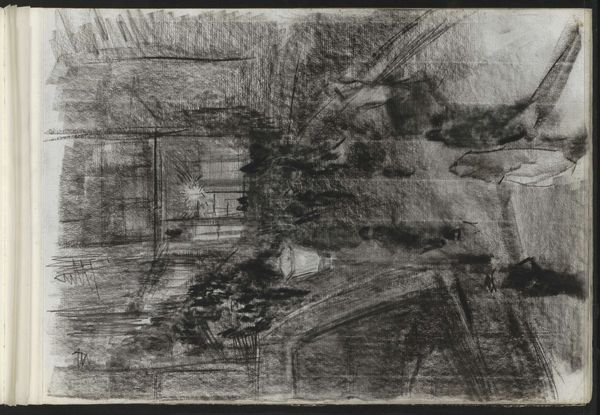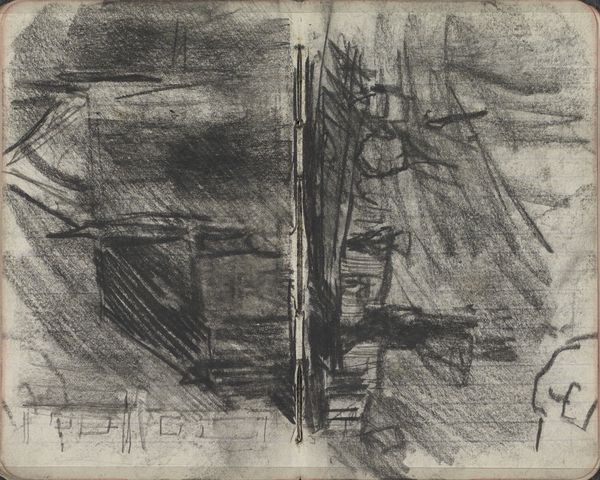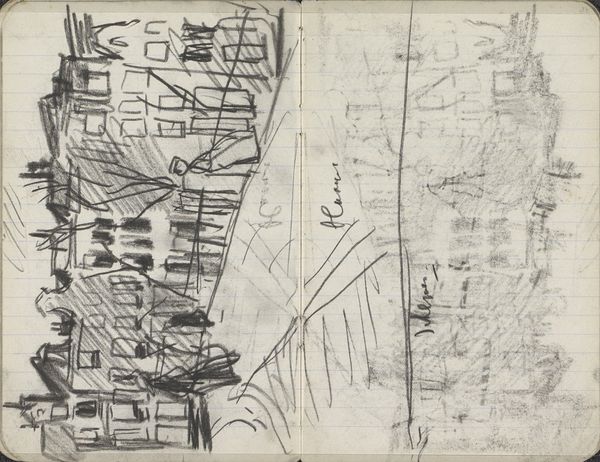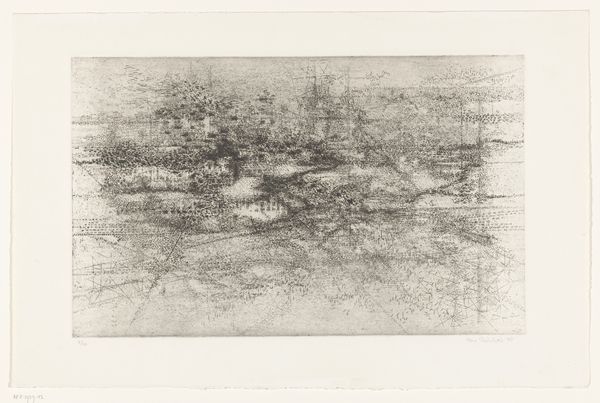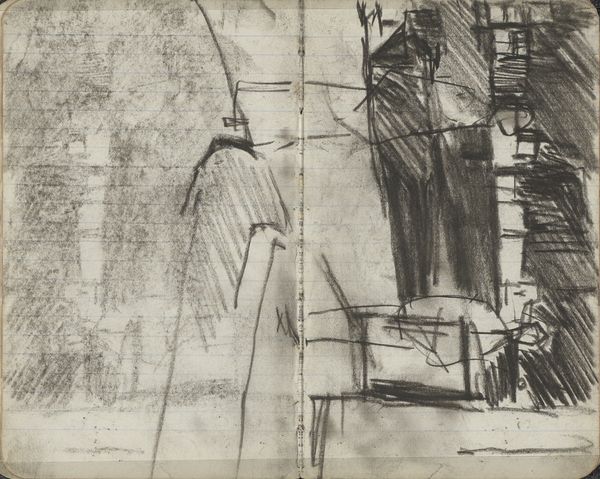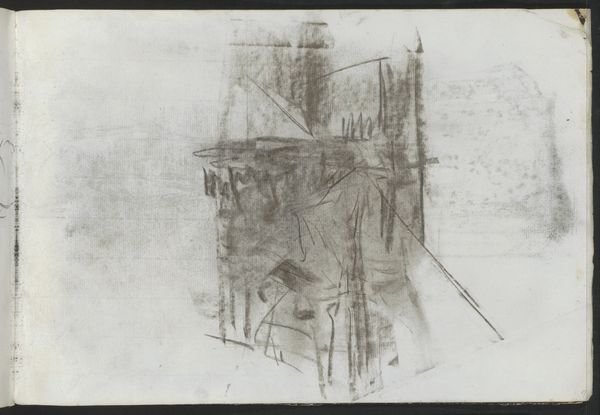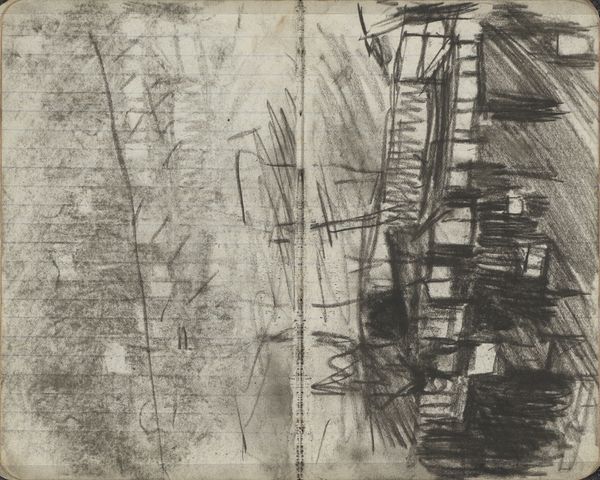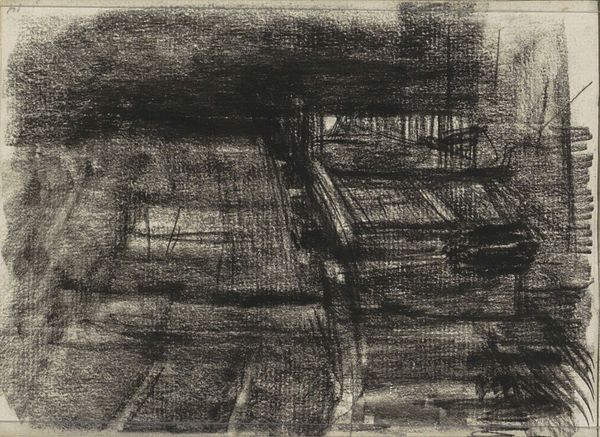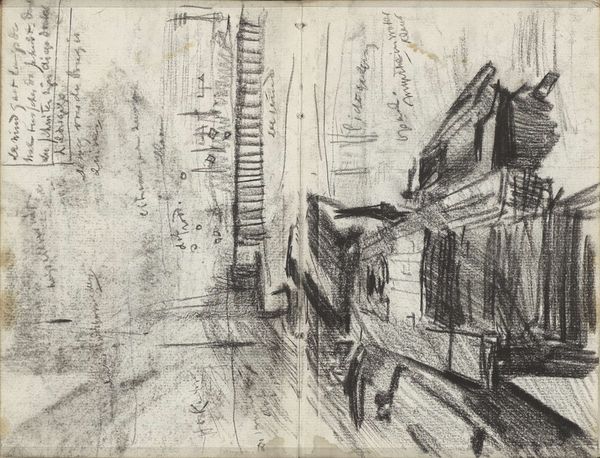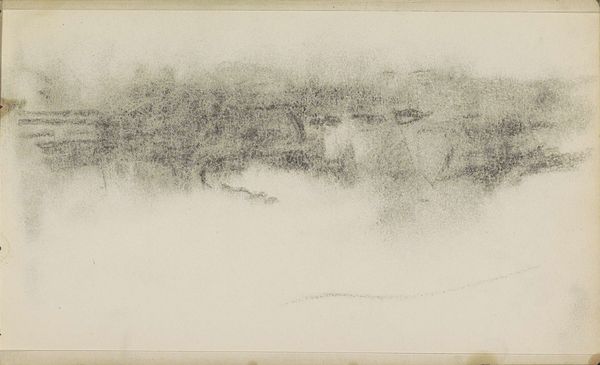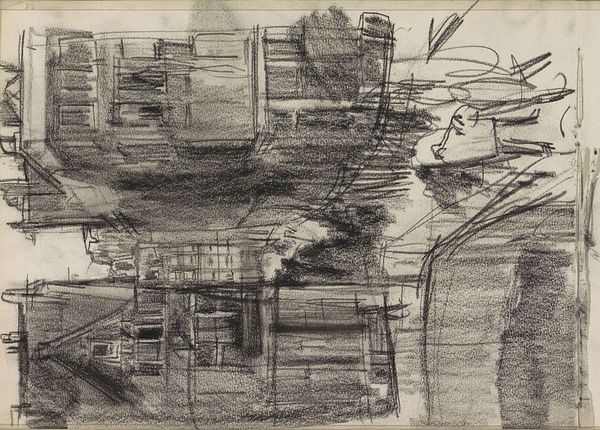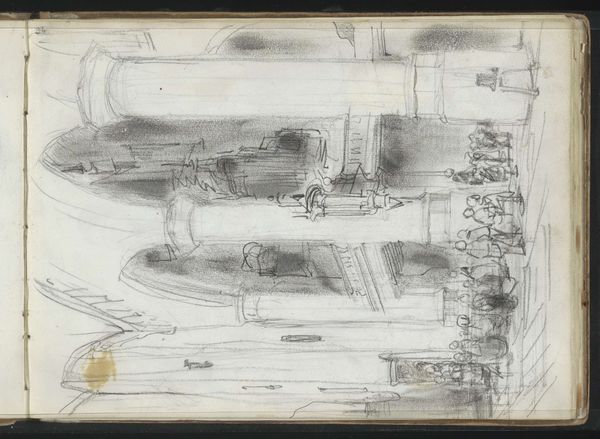
Copyright: Rijks Museum: Open Domain
Editor: So, here we have Willem Witsen’s "Gezicht in Amsterdam, mogelijk het Damrak," created sometime between 1901 and 1907, using charcoal. It strikes me as quite hazy and ephemeral, almost like a memory fading away. What's your take on this piece? Curator: It's fascinating to consider this work within the context of the evolving image of Amsterdam during the late 19th and early 20th centuries. The quick, almost fleeting lines suggest an artist capturing a city undergoing rapid transformation. What do you make of his choice to depict a perhaps mundane, ordinary view? Editor: Well, it’s not grand architecture or a national monument. Was Witsen intentionally contrasting the usual heroic portrayals of urban life? Curator: Precisely! He was part of a broader artistic movement that turned away from idealizing cityscapes, focusing instead on the everyday experiences of its inhabitants. This reflects a growing democratisation of art and a shift towards portraying the socio-political realities of urban life, showing how the other half lives. What kind of person do you imagine might've been drawn to something like this? Editor: Someone wanting to record real life, to capture a fleeting moment honestly, rather than presenting an idealised view? Curator: Yes! Consider the role that photography was beginning to play as well; it allowed for almost instantaneous recording of events as they truly were. Do you think it impacted on how the artwork became somewhat more real? Editor: Absolutely! Seeing it in the light of social commentary really makes me appreciate the nuances within this seemingly simple sketch. It shows a city undergoing modernisation, unfiltered, and therefore powerful! Curator: Indeed. Examining the artistic representation of our public and historic images invites discussion about their historical conditions and significance.
Comments
No comments
Be the first to comment and join the conversation on the ultimate creative platform.
